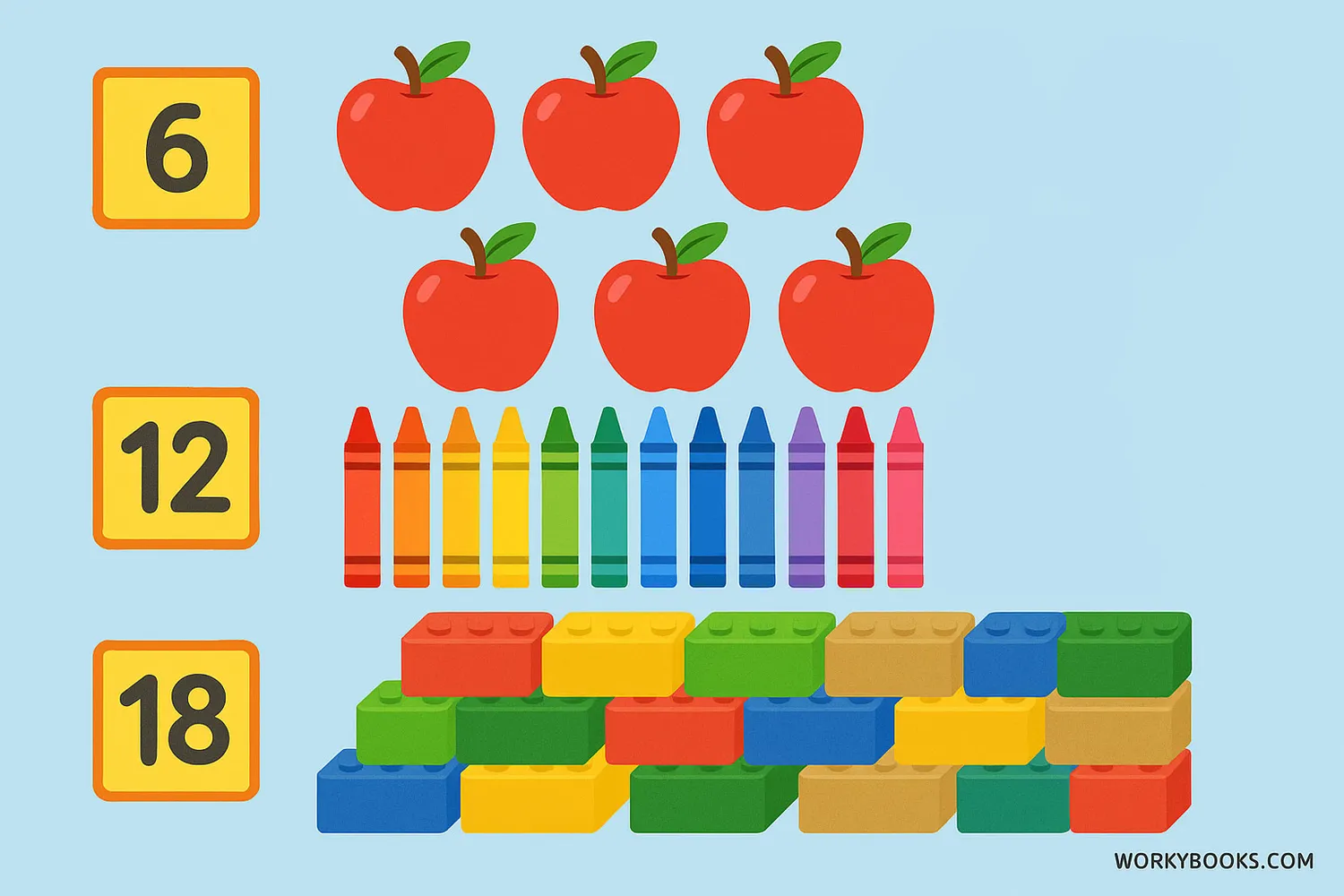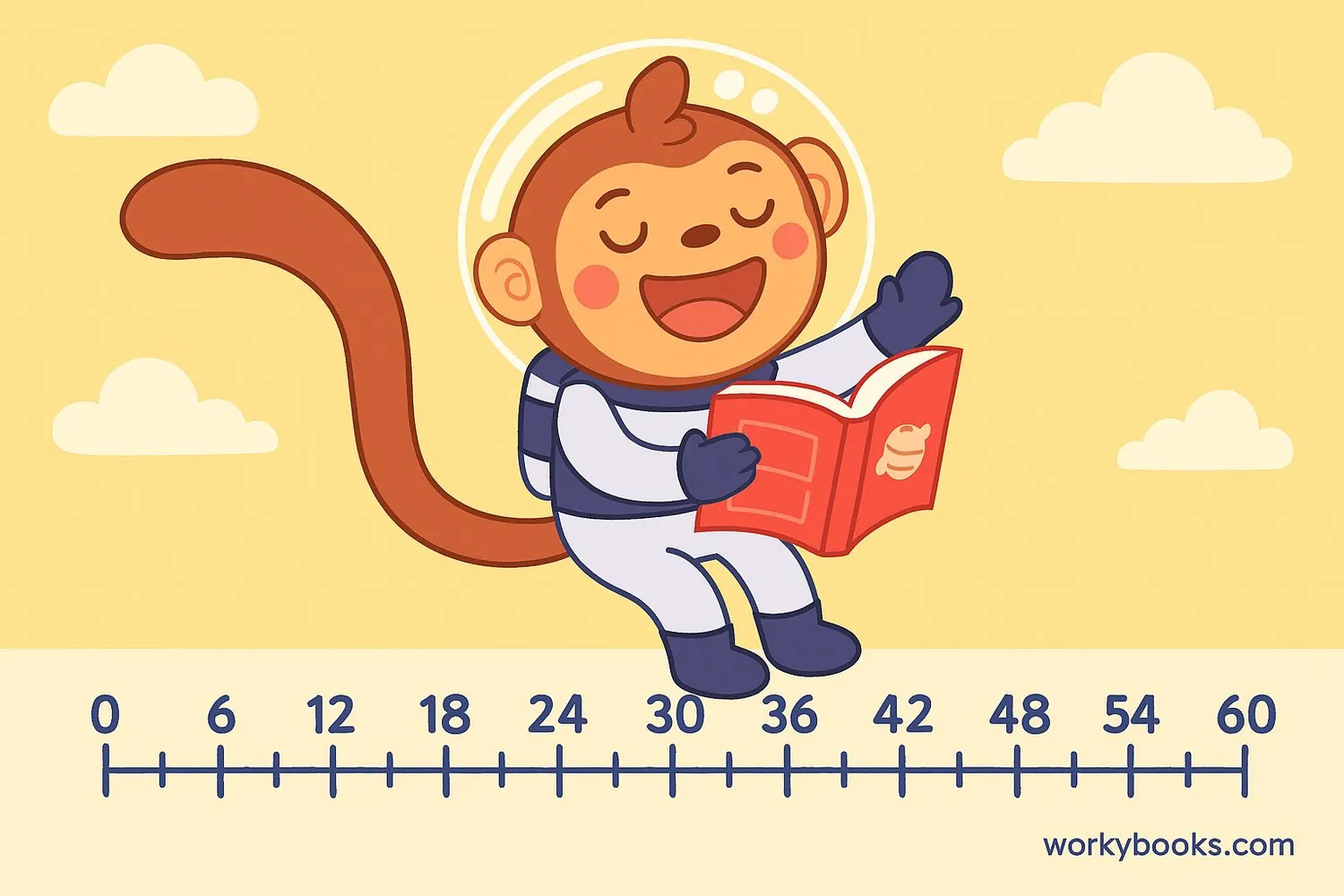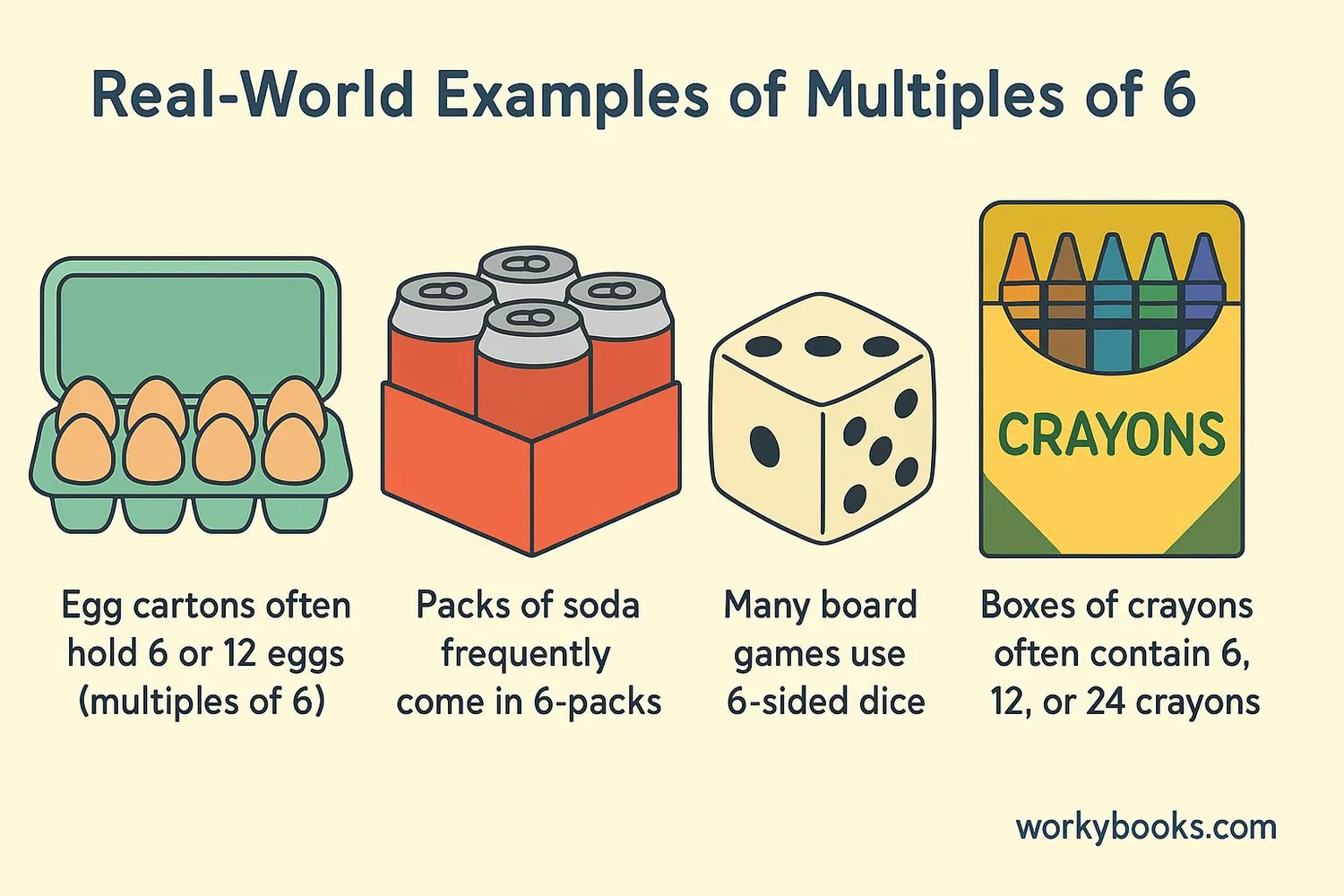Multiples of 6 - Definition, Examples, Quiz, FAQ, Trivia
Learn multiplication patterns and skip counting with easy explanations and practice activities
What are Multiples of 6?

Multiples of 6 are the numbers you get when you multiply 6 by any whole number. Think of them as the numbers in the 6 times table!
For example:
6 × 1 = 6
6 × 2 = 12
6 × 3 = 18
6 × 4 = 24
and so on!
Every multiple of 6 is also an even number because 6 is even. You can think of multiples of 6 as numbers that can be divided evenly by 6 without leaving a remainder.
Key Concept
A multiple of 6 is the product of 6 and any natural number. The first multiple of 6 is 6 itself.
How to Find Multiples of 6

There are several easy ways to find multiples of 6:
1. Multiplication: Multiply 6 by any whole number (1, 2, 3, 4, ...)
2. Skip Counting: Start at 0 and keep adding 6: 0, 6, 12, 18, 24, 30, 36...
3. Division: If a number can be divided by 6 with no remainder, it's a multiple of 6
Multiplication Formula
Where 'n' is any natural number (1, 2, 3, 4, ...)
Remember
The smallest multiple of 6 is 6, and multiples go on forever - there is no largest multiple!
Examples & Patterns

Let's look at some examples of multiples of 6:
First 10 Multiples of 6:
- All multiples of 6 are even numbers
- The last digit alternates between 6, 2, 8, 4, 0
- When you add the digits of any multiple of 6, the sum is always divisible by 3
- Every multiple of 6 is also a multiple of both 2 and 3
- Egg cartons often hold 6 or 12 eggs (multiples of 6)
- Packs of soda frequently come in 6-packs
- Many board games use 6-sided dice
- Boxes of crayons often contain 6, 12, or 24 crayons
Pattern Tip
Notice that multiples of 6 always end in 0, 2, 4, 6, or 8 - just like all even numbers!
Multiples of 6 Practice Quiz
Test your knowledge with this 5-question quiz. Choose the correct answer for each question.
Frequently Asked Questions
Here are answers to common questions about multiples of 6:
Math Trivia
Discover interesting facts about multiples and numbers:
Ancient Number Systems
The ancient Babylonians used a base-60 number system around 2000 BC. This is why we have 60 minutes in an hour and 360 degrees in a circle - both multiples of 6!
Nature's Multiples
Honeycombs have hexagonal (6-sided) cells because this shape allows bees to store the most honey using the least amount of wax. Hexagons are closely related to multiples of 6.
Perfect Numbers
6 is the smallest perfect number. A perfect number equals the sum of its proper divisors (1+2+3=6). The next perfect number is 28, which is also a multiple of 4 and 7.
Dice Games
Standard dice have 6 faces, and many board games use two dice. The most common roll (7) is the sum of two opposite sides that always add to 7 (1+6, 2+5, 3+4).





